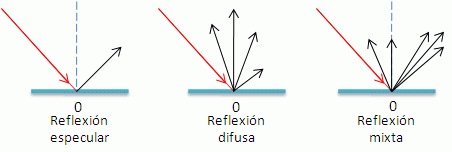No products in the cart.
Horticulture, Uncategorized
Light reflection is as important as the light source in a crop.
Many customers have asked us why we ask about the reflective material of the grow room, does it matter much? Of course it matters, and matters a lot. Here’s why.
First of all, it is important to know what light reflection is:
Light reflection is the phenomenon of change in the propagation path of light when it hits a surface, whether it is polished or rough.
The importance of reflective materials is a reality in an indoor crop as it will define the amount of light that “bounces” and is used by the crop. A room with exposed brick is not the same as a room with smooth walls and a reflective color, preferably white.
If the grow room has dark colors, the reflection is very low or null, but if it has light colors and the surface is smooth and not rough, the reflection is higher and uniform than if it had dark or light colors but with a rough surface.

There are 3 main types of reflection:
- Diffused reflection: It occurs when light strikes an opaque, but not polished, surface, which has a series of irregularities that cause it to reflect in different directions.
- Specular reflection: It occurs on fully polished surfaces such as a mirror. In this case, reflection occurs in only one direction, making it possible to form images. This type of reflection obeys the “law of regular reflection” so: angle of incidence of the rays is equal to angle of reflection.
- Mixed reflection: It occurs when light is reflected from a mixed surface, i.e. smooth and rough, so that the rays exit in all directions with a certain order. This reflection is the most common in most materials as it has a dominant directional component that is partially diffuse, e.g., a smooth wall with white paint.




Once this is understood, it is very important to be sure of the materials to be used in the crop as well as the covering that the walls, floor and ceiling will have. It is also advisable that the cultivation tables, pots, structures that are in the middle of the crop, are made of smooth reflective material, i.e., for example, if the cultivation table is made of aluminum or steel, that they are polished or anodized rather than painted in a dark color. The pots if they are white, much better than the typical black ones, the watering trays the same, there are gray, white or black, the best will be to choose the white one if there is possibility.
In greenhouses, for example, the reflection of the light inside will determine the amount of light that can be reflected from both the sun and the artificial lighting that is in place, and will also influence the total number of luminaires needed to add the extra PPFD or DLI required by the grower to have optimized lighting levels in all parts of the crop. The higher the reflection, the lower the number of luminaires, and the lower the reflection, the higher the number of luminaires needed to achieve the desired homogeneity over the entire area to be cultivated.
Therefore, we can say that the importance of the reflective materials used in a crop should be high and to be taken into account to try to save on lighting costs and optimize resources.
At Virex, we take this part very much into account when making professional lighting plans as it will determine what amount of luminaires we need to reach a target PPFD and thus, get the extra DLI crops need to produce more, better quality and year-round crops regardless of outdoor conditions or season of the year.
Consult us about your project or idea.

 Español
Español
